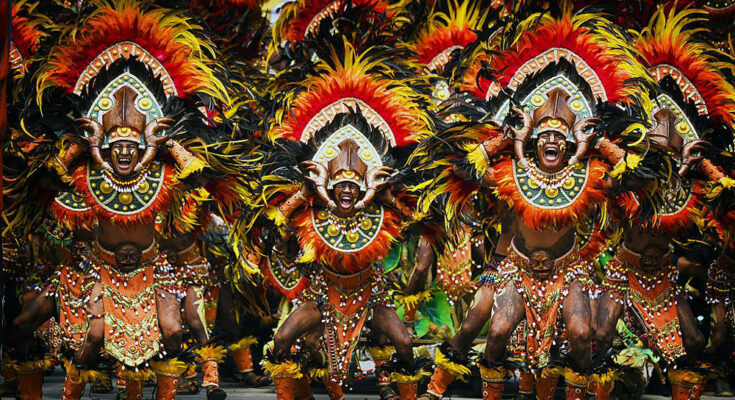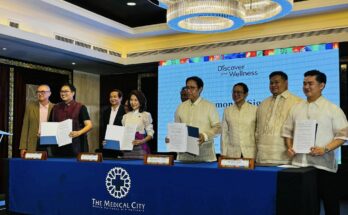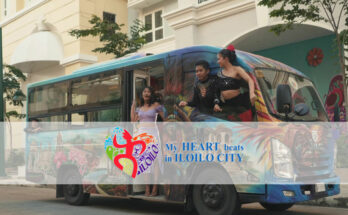If you’ve ever spent time in the Philippines, you would know that Filipinos are never ones to miss a party. From small barangay fiestas to grand festivals, there’s always a way for Filipinos to celebrate and put on a show. On top of creating a grand spectacle, Philippine festivals are also a way to bring people together.
Psyched about attending a fiesta in one of the Philippines’ three island groups soon? If you’re planning to join any festivities, make sure to prepare ahead of time and start weighing your options for good hotels in Cebu City or other localities you intend to visit. Major festivals tend to draw large crowds, and as such, you wouldn’t want to be left without a place to stay or with transportation and mobility problems.
If you’re still on a high from your last fiesta or want to experience a province’s cultural traditions for the first time, here are some of the country’s grandest and most unique festivals. Attend any one of these celebrations and make their home provinces your next travel stop.
Sinulog Festival
Cebu City, the Queen City of the South, is famous for hosting one of the biggest festivals in the country. Held every third Sunday of January, the Sinulog Festival commemorates Cebu’s patron saint, the Holy Child Jesus or the Santo Niño. This religious festival is a week-long event filled with street parties, food crawls, and concerts.
Participants in the Sinulog parade are often decked out in outrageous costumes and are eager to dance to the beat of native gongs, drums, and trumpets. One of the most famous aspects of the Sinulog is its procession dance, which is represented in the festival name itself. “Sinulog,” or “like the water current” when translated, describes the dance steps that the parade participants perform: two steps forward and one step back, just like the ocean waves you’ll encounter in the beautiful province of Cebu.
Dinagyang Festival
Not to be outdone is the Dinagyang Festival, which is Iloilo’s biggest cultural and religious celebration. Also held in honor of Senyor Santo Niño, the Dinagyang Festival takes place every fourth weekend of January. Participants can look forward to a raucous and exciting weekend of music, dance, delicious food, and processions.
One thing you can look forward to when you attend the Dinagyang Festival is the spirited competition locals engage in, especially for native dance. Cap off the celebration with other attendees by joining the religious procession and fluvial parade, tasting Ilonggo delicacies at the food fest, and watching the fireworks go off.
Panagbenga Festival
The Panagbenga Festival in Baguio City—also known as the Philippines’ Summer Capital—is one of the most awaited festivals in the North. Held throughout the whole month of February, the Panagbenga Festival is known for its Grand Float Parade where parade participants showcase large floats made entirely of flowers. Participants also celebrate the rich culture of the Cordilleras by dancing to traditional music while decked out in colorful Igorot garb.
When translated from Kankana-ey, the word “Panagbenga” means “a season for blossoming.” This is meant to describe both Baguio’s flower industry and the resilience of its people following the devasting 1990 earthquake. Attending the festival will give visitors a great sense of Baguio’s vibrance and love for life.
Kadayawan Festival
The Kadayawan Festival is held during the third week of August and is arguably the biggest celebration for Dabawenyos. The festival comes from the word “madayaw,” which means “good,” “superior,” and “valuable.” This festival was originally a way for the indigenous peoples to give thanks for a bountiful harvest. Today, it serves as an all-out celebration of everything good in life.
Festival activities include beauty pageants, street dancing, floral floats, and the “Ka’n sa Da’n” food event. And like your typical grand fiesta in the Philippines, bright costumes and parade music abound during the celebration.
MassKara Festival
Held every October, the MassKara Festival is one of the most unique fiestas in the country. It‘s also steeped in history and the Negrense people’s strength of spirit. Bacolod City, also known as the City of Smiles, started celebrating the festival during the 1980s to lift the spirits of the local people during times of hardship. Today, millions of people flock to Bacolod to witness a show of pride creatively expressed by performers donning masks of smiling faces.
Similar to events such as the Carnival of Venice and Rio Carnival, the MassKara Festival is essentially a fun masquerade party with activities such as pageants, parades, concerts, and food crawls. It’s not to be missed if you’re in the Negros region.
Higantes Festival
The people of Angono, Rizal, also go big on their festivals—literally speaking. Held every fourth week of November, the Higantes Festival is both a religious and historical celebration. The festival honors San Clemente, the town’s patron saint, while also commemorating events during the Philippines’ colonial past. According to Angono folklore, the locals created the papier-mache “Higantes” or giants to protest against Spanish inquisitors.
These Higantes can reach up to 12 feet, and each barangay has its own giant representative. It’s no surprise that Angono, the Art Capital of the Philippines, is where this highly artistic celebration is held.
More Fun to Party in the Philippines
The Philippines boasts an array of festivals that beckon onlookers from near and far. These festivals are held to remember patron saints, local traditions, bountiful blessings, and the sacred memories of people that the nation has lost. If you’re up for a party and want to enrich your travel experience in the Philippines, try doing it the local way and attend any of these spectacular festivals.




